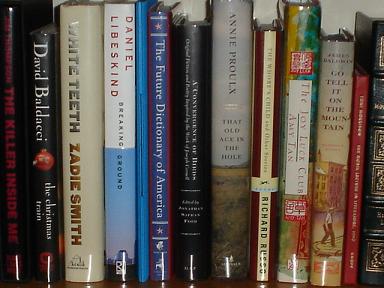To Kill A Mockingbird
 Harper Lee is one of those American authors that has, and always will have, the word “Great” associated with their name. Miss Lee only has one book to her resume; the classic “To Kill a Mockingbird.” Of course, if one wanted to be picky, they could also count her assistance on the novel “In Cold Blood” as a major writing contribution. But somehow, I think that childhood friend Truman Capote would want that credit removed.
Harper Lee is one of those American authors that has, and always will have, the word “Great” associated with their name. Miss Lee only has one book to her resume; the classic “To Kill a Mockingbird.” Of course, if one wanted to be picky, they could also count her assistance on the novel “In Cold Blood” as a major writing contribution. But somehow, I think that childhood friend Truman Capote would want that credit removed.Published on July 11th, 1960, “Mockingbird” was accepted, automatically, as the greatest novel of its time. It was critically acclaimed and won the literatures highest prize, the Pulitzer. During this time, her relationship with lifelong friend, Capote, was thinning. This is attributed to Capote’s substance abuse and it is long rumored that Capote was extremely jealous of Lee’s new found fame because it was actually He that wrote “Mockingbird.”
 Several times, Capote made reference that he wrote large portions of “Mockingbird” and Lee’s failure to produce another novel adds fuel to the flame. Another person, probably the only other person to step forward, is Pearl Kazin Bell, an editor at Harper’s magazine. While there is no documented proof of this, the only people who can verify are Capote (died in 1984), and Lee herself.
Several times, Capote made reference that he wrote large portions of “Mockingbird” and Lee’s failure to produce another novel adds fuel to the flame. Another person, probably the only other person to step forward, is Pearl Kazin Bell, an editor at Harper’s magazine. While there is no documented proof of this, the only people who can verify are Capote (died in 1984), and Lee herself.The book, “To Kill A Mockingbird” holds quite some weight in the collectible world. A first printing, first edition, with just a good dustcover can get over a thousand dollars on the market. Should the dustcover be in better condition, the price rises considerably. Since publication, the dust jacket was prone to damage and tear, and this shows on many editions for sale.
 It is quite a rarity to find an early inscribed edition of “Mockingbird” because the collectible value is quite substantial. Lee did not do many book signings at the books initial release, and even today, Lee remains to be highly reclusive and refuses to attend lectures and award ceremonies in her honor. At the publication of the 30th/35th/40th anniversary, Lee pre-signed copies of the reissue, and this was sold to subscribers of the publisher. You can get these editions on the secondary market for much cheaper than a first edition.
It is quite a rarity to find an early inscribed edition of “Mockingbird” because the collectible value is quite substantial. Lee did not do many book signings at the books initial release, and even today, Lee remains to be highly reclusive and refuses to attend lectures and award ceremonies in her honor. At the publication of the 30th/35th/40th anniversary, Lee pre-signed copies of the reissue, and this was sold to subscribers of the publisher. You can get these editions on the secondary market for much cheaper than a first edition.The one thing that makes me hesitate with a signed Harper Lee anything – is that her signature is very simple. An easy forge. The book pictured to the right shows a private inscription. Something that Lee would not do for a stranger, and more so, since it has more of Lee’s handwriting, it’s easily identifiable as an authentic signature.
With Lee – the only real valuable is a first printing of “Mockingbird” or any galley’s (uncorrected proofs) of the novel. These, of course, are substantially higher in value.

My advice when collecting Harper Lee material is:
• Understand that a first printing of “Mockingbird” is no longer just a book. This is a lifetime collectible that can be passed down to many generations.
• Be sure you feel comfortable with the signature. I would never buy a flatsigned book by Harper Lee due to the simplicity of her signature. Always seek advice from others. You are better safe than sorry.
• Be sure this is something you care about. Lots of times people collect just to own it. You have to love this book and its history to pay the price – but once you have – you will never regret it.
Just a heads up of what to look for – there are several collectible versions of “Mockingbird.” I am listing those that I am familiar with. This is, in no way a definitive listing:
• First edition, first printing.
• 30th Anniversary, first printing (signed or unsigned)
• 35th Anniversary, first printing (signed or unsigned), the rarest of all reprints.
• 40th Anniversary, first printing (signed or unsigned), most common of all reprints.
• Easton Press leather bound edition (unsigned)
• First Edition Library facsimile
